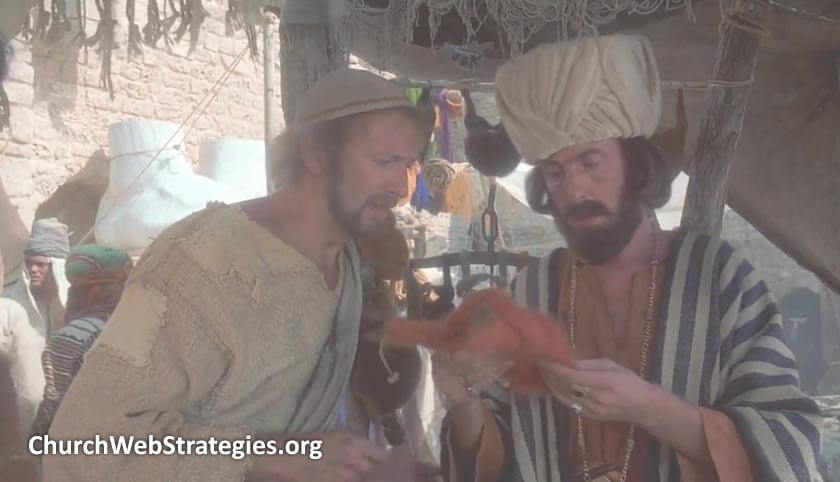By simply showing a link to your online store, you are suggesting they might want to visit and purchase items from it. However you can take this concept of suggesting things to people much further. If done intelligently, it can benefit both the customer and the church. This article will outline curated product suggestions, which are ones that involve manual input and help. Plus many of these principles can be applied to suggesting content to your audiences.
There are a variety of products a church may consider selling on their website, but I will go with something just about every church could pull off; a Bible. Granted you may want to brand the Bibles you sell with a church logo, or do something equally interesting. In the examples below, you can replace the word “Bible” with just about any sort of product; but I think this is a great example that is relevant to all of Christ’s churches.
As I mentioned before, curation requires some human intervention, which may be time intensive, but should yield better results than purely data-driven suggestions. Additionally, your web team will need to work with the content providers to ensure the suggestions are correct. However, several components can be automated, in that when you are selecting a suggestions, you can use some filtering to narrow down the list. For instance, when working with your Bibles, you can start by removing audio CD’s from your product listing.
Examples of Curated Product Suggestions
- On Sale: Fairly self-explanatory, but these are hand-picked Bibles that you chose to discount. This is typically featured on higher-level pages such as your store landing page, or (if you have one) your Bible category landing page.
- Featured Products: Similar to sales, these may be new Bibles, a seasonally decorated Bible, a Bible mentioned by your pastor during the service, your bulletin, or an advertisement. The placement for these is also similar to sale items; however, you can integrate them with your search results so a featured item is shown at the top of the list.
- Related Products: These items are parts and accessories that would compliment a Bible. You may want to show reading plans, book lights, bookmarks, or slip covers. These should be displayed on your item detail page after the primary content of the the product description, or just prior to starting the checkout process.
- Product Bundles: This model was made famous on Amazon, as they would sell another related product with the one you are considering; typically with a small discount. You can take one or two of your related products, such as that nice bookmark, and offer it with the Bible at a 10% discount.
- Similar Products: These are Bibles that are like the one they are currently viewing. Perhaps the same translation but a different cover, other pocket Bibles, or other study Bibles. The placement of these other Bibles should be toward the bottom of the item detail page. The reasoning is that the person reads through the entire page and is not interested. This would be an effort to keep them engaged with the site and moving onto that similar product.
At the beginning of the article I mentioned that this could be applied to suggesting other content on your website. If you are on a ministry, news posting, or event; there is an opportunity to show featured, related, and similar items for all of these.
Action Item: See where your various templates can support the intelligent insertion of product suggestions. Consider your home page, product category landing page, and product detail page as spaces to show product suggestions. Obviously the home page is better for a general sale item, and as you move toward the product detail page, better for similar and related products. Know that although it will take some time with tagging or manually entering items; properly managing your small church online store can have some massive kingdom impacts!
Note: This article was inspired by the many conversations I had on the topic with Olivia Blonde
Photo courtesy of Monty Python’s: Life of Brian. No disrespect of blasphemy intended, just good humor.

